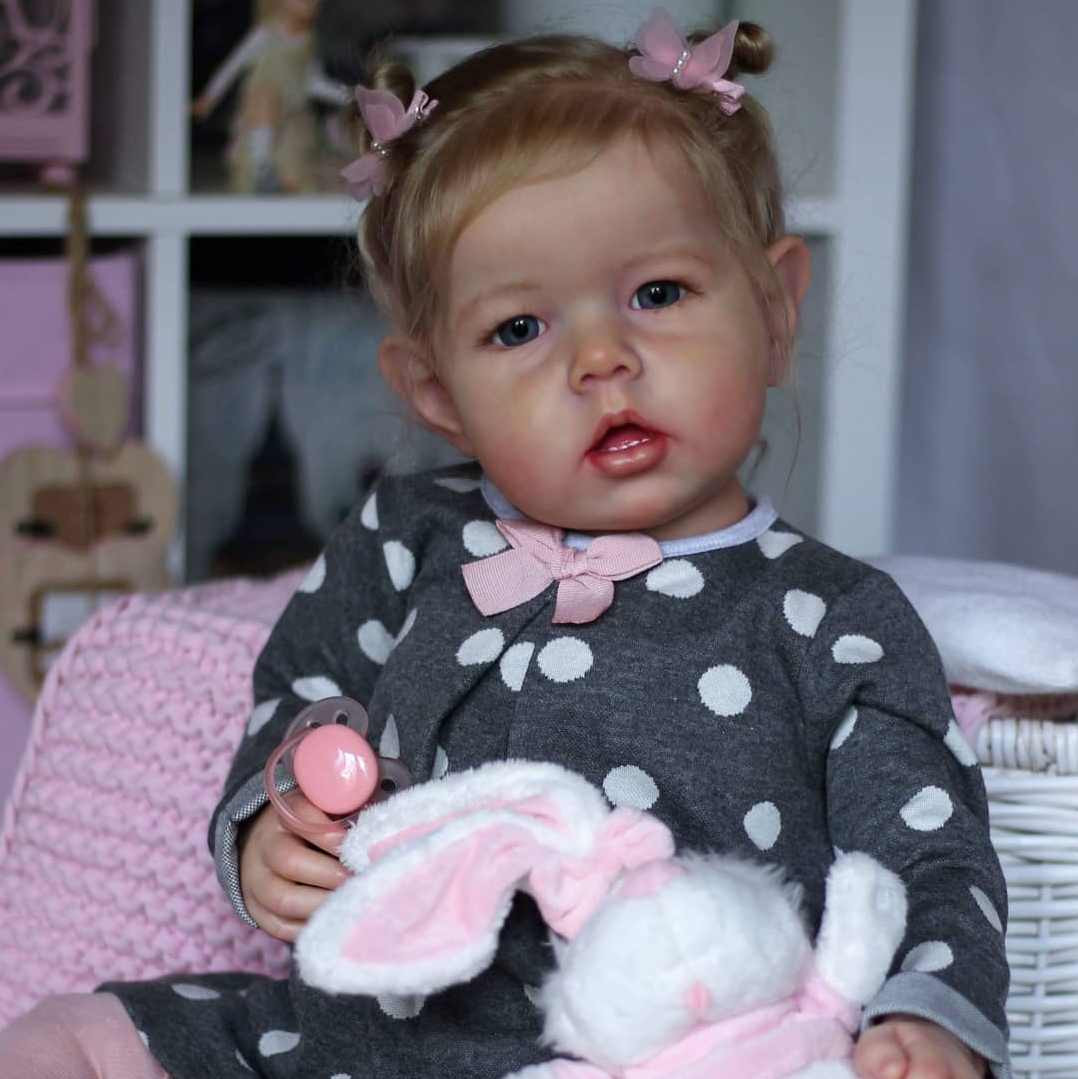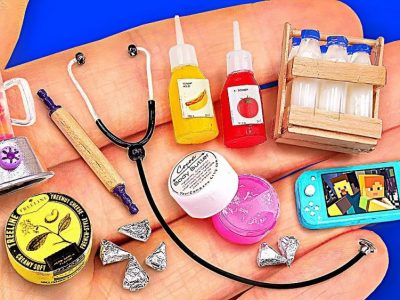A Brief History of Dolls
History of Dolls
Before discussing dollhouse dolls, I want to briefly discuss the history of dolls. Archaeologically, dolls are humankind’s earliest toys and usually represent humans or other living creatures. As well as toys for children, various cultures also use dolls in religious, spiritual, and magical ceremonies. Today, dolls are toys for children, as well as collectibles for adults.
Ancient Times
The earliest documented dolls date to ancient Egypt, Greece, and Rome. In these ancient civilizations, dolls served as playthings and also had spiritual significance. Marriageable girls in ancient Greece and Roman dedicated their discarded dolls to goddesses. It was also customary for boys to dedicate their toys to the gods when they reached puberty. In Africa, dolls were supernatural intermediaries, as well as forms of entertainment and learning. Thus, many African cultures manipulated dolls for rituals.
In ancient times, people created dolls from available materials like stone, wood, bone, ivory, etc. Archaeologists found paddle dolls, dating from 3000–2000 BC, in ancient Egyptian graves. Paddle dolls are carved flat pieces of wood, geometrically painted, with long, flowing hair made of strings of clay or beads.

Although ancient people had rag dolls and stuffed animals, they are not present in prehistoric graves. Given the perishable nature of the materials, these dolls most likely did not survive. However, archaeologists have found Roman rag dolls dating back to 300 BC.
Japanese traditional dolls dating back to the Dogū figures (8000–200 BCE) and Haniwa funerary figures (300–600 AD). The humanoid figures represented gods and were used in rituals. The figures also had multiple roles and were also used as toys, for protection, and in religious ceremonies.
Dolls with movable limbs and removable clothing seem to date back to 200 BC.

There is evidence that African, Native American, and European cultures also used effigies to perform spells on someone. Examples include the European poppet and the African nkisi or bocio.
1400s-1900 Europe
Historical records show that, as of 1413 AD, there were doll makers in Nürnberg, Germany. From the 16th to the 18th century, Germany was the leading manufacturer of dolls and toys. Along with Germany, Paris was another early mass-producer of dolls.
Additionally, around 1558 in Germany, dollhouses first appeared. Wealthy Europeans enjoyed dollhouses, but dollhouses were display pieces, not playthings. Nonetheless, girls continued to play with their rag, wax, or wood dolls.
About 1820, glazed porcelain (Dresden) doll heads and unglazed bisque (ceramic) heads became popular. The Jumeau family made a bisque doll in the 1860s which had a swivel neck. Doll’s bodies consisted of covered wood or wire or stuffed with sawdust or papier-mache.
[Note: a “china doll” is made of glazed porcelain; a “bisque doll” is made of unglazed bisque or biscuit porcelain. A china doll usually has a white glazed head with painted molded hair and a body made of cloth or leather. They were mass-produced in Germany from 1840-1890. A bisque doll is characterized by a realistic, skin-like matte finish and was popular between 1860-1900.]
The golden age of elaborately dressed Parisian bisque fashion dolls and the smaller “milliner’s models” occurred from1860 -1890.
Up through the middle of the 19th century, most European dolls looked like adults. In 1850, child-like dolls and baby dolls first appeared. By the late 19th century, these baby and childlike dolls dominated the market.
The 19th century saw the introduction of dolls with socket joints, movable eyes, voices, and the ability to walk. Paper-doll books and dolls of India rubber or gutta-percha also appeared. The first modern stuffed toys (representing animals) appeared in 1880, with the teddy bear appearing in 1902-3.

Russia
In 1900, Russia introduced its nesting dolls during the Paris World Exhibition. Although people associate Russia as the birthplace of nesting or matryoshka dolls, China is actually where the idea of a nesting doll originated. The Chinese crafted nesting boxes or containers, consisting of a large box with several smaller boxes of diminishing size inside. These boxes date back to the Song Dynasty in 1000 AD. It was 800 years later when the Chinese applied the nesting theme of the boxes to dolls. In 1890, two Russians, Vasilii Zvyozdochkin and Sergei Malyutin – perhaps inspired by Chinese nesting dolls- created the matryoshka doll.

The Americas
The oldest American dolls may be those found in Inca and Aztec graves. Most notable are the kachina dolls from the 19th century. The Zuni Pueblo and Native American Hopi peoples viewed kachinas as powerful supernatural beings in their spiritual lives. Adults gave kachina wooden dolls to children as treasured objects to help them identify the many different kachinas. At first, the dolls were flat, simple effigies. Today, they are works of art.
Inuit people created dolls out of common materials, such as soapstone and bone. They often clothed dolls in animal fur or animal skin, the traditional attire to survive cold winters.
The Americas also introduced tea dolls, apple dolls, corn husk dolls, and others.
The 20th Century
Doll manufacturing changed with the advent of polymer and plastic. Due to the low cost and ease of production, manufacturers could mass-produce dolls. Thus, from the mid-20th century, soft vinyl became the primary material for dolls for children. Collectible dolls for adult collectors used porcelain, plastic and synthetic resin resembling porcelain.
From 1900 to the present, dolls come in a variety of sizes, colors, and qualities. Popular dolls included the teddy bear (1903); the Kewpie Doll (1903); the Bye-lo Baby, who closed her eyes in sleep (1922); the Dydee and Wetsy Betsy dolls (1937); the Barbie doll (1959); Cabbage Patch Kids (1983); and the American Girls Collection (1986). More recently, manufacturers have created a line of realistic human baby dolls called Reborn.



A Brief Word About Barbie Dolls

When I was a child, I associated the word “doll” exclusively with Barbie Dolls. I was aware of other types of dolls, but the Barbie doll was the first image that came to mind. Perhaps because of Barbies, I was never interested in dolls as a kid. However, once I became an adult and built my first dollhouse, I became a little more interested in dolls. Shockingly, I even grew to appreciate Barbie dolls. And (gasp!) I even owned a few limited edition Barbies.
Over the years, as space became limited, I gave away or sold the few Barbies I owned. My remaining Barbie is my favorite – the Limited Edition Marie Antoinette. I believe I bought her for around $300 back in 2003. Now, checking eBay prices, the doll is worth from $1500 to over $2000.


The focus of my blog is not Barbie dolls, superhero toys, Reborn dolls, etc. I plan to limit my discussion to dolls inhabiting dollhouses or other displays.









